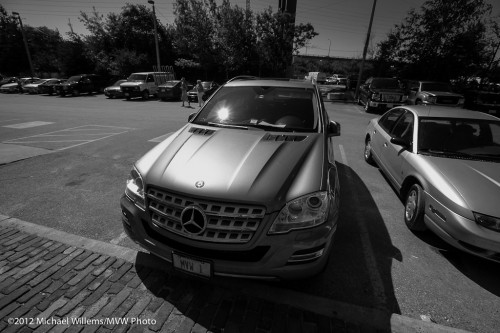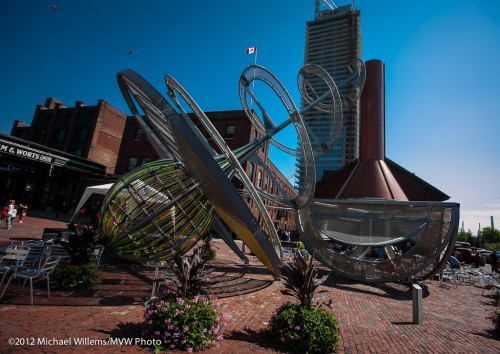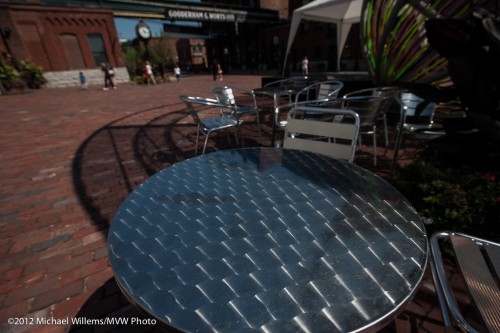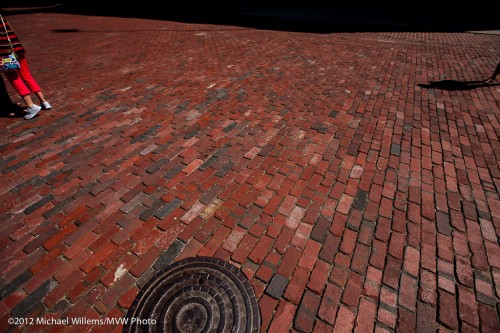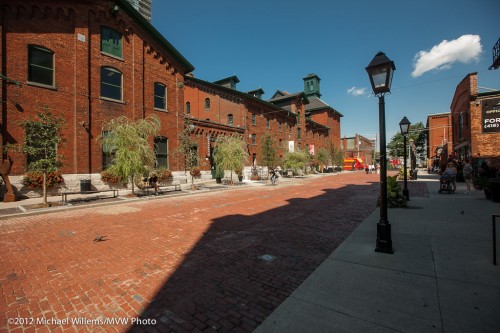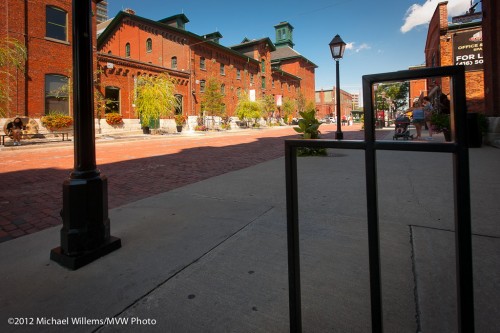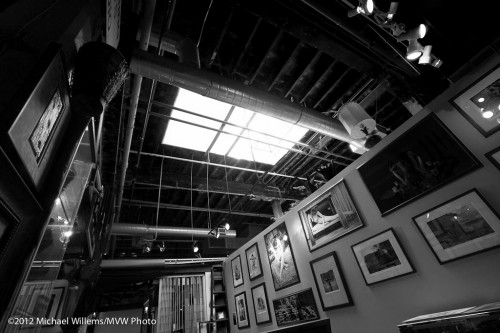…at The Distillery. Today, on the short walk from my car to the gallery, I used my wide angle lens, the 16-35 mm lens, set to 16mm.
Close to a car, that leads to distortion:
When faced with a large area, when not close to anything, you do not get that, but you can get it all in. I preferred the Distillery without that huge new skyscraper next to it, by the way.
And “wide” allows you to get “into” a scene. Like in this shot: if it had a coffee on this table, I would imagine myself sitting there:
And when I aim close to the ground, and shoot from close to the ground, the ground seems to come up at me:
…and you can see the depth in a street (and the “rule of thirds” in the composition):
…and get an appreciation of the high gallery ceilings:
(yes, my works are still for sale at The Kodiak Gallery – I shall be there noon-6pm every day this week).
None of those shots could have been done in quite the same way without that wide a wide angle lens. 16mm on a full-frame camera means 10mm on a “crop” camera, which you are most likely to have. So a 10mm lens will give you the ability to:
- Get it all in
- Show depth
- Show people or items “surrounded by their environment”
- Shoot at slow shutter speeds (lke 1/10th sec) without blur
- Get great depth of field (“sharp-o-matic” even at f/5.6 or f/4!)
That is why if you do not yet have a wide angle lens, a 10-20 (or if you have a full-frame camera a 16-35), you might consider adding one. I shall not stop saying it!

